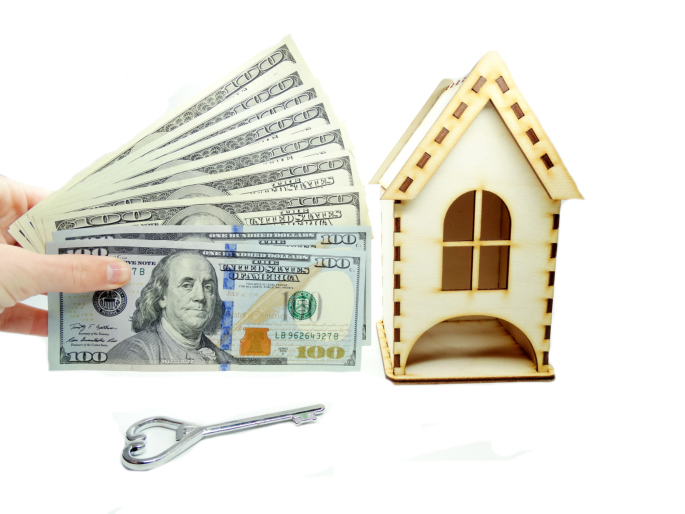 After all of the excitement of the holidays, the sparkle of the lights and the overstimulation of decorations, the rest of winter can seem lackluster. Don’t let your home add to the dreariness of the season.
After all of the excitement of the holidays, the sparkle of the lights and the overstimulation of decorations, the rest of winter can seem lackluster. Don’t let your home add to the dreariness of the season.
Spruce up your curb appeal with the tips below and inspire your neighbors to create well-groomed street that will make driver’s passing through smile.
Tend The Plants
If you’re currently located in a winter wonderland, then dig up any dead plants that won’t grow back. Replace them with cold-loving flowers, such as snowberry or lambs ear.
In warmer climates, this is the time for any landscaping changes you’d like to make. It will give your plants a chance to flourish by spring and have solid roots before the harsh heat of summer.
Light The Way
With daylight hours dwindling, well-placed outdoor lighting will help highlight your home’s best features in the evening.
Not only do they make your home look warm and cozy, but they also provide much-needed walkway lighting so that your guests arrive safely.
For a festive New Year’s sparkle, wrap white lights around the porch and in the trees.
Create A Custom Mailbox
Reclaim a vintage mailbox or get creative with paint to let the neighborhood know your family’s favorite sports team. A personalized letterbox says a lot about your household, so make it something special that doesn’t look like every other box on the street.
Also, visitors trying to find your home always appreciate large, easy-to-read address numbers visible from both directions.
Place Pots Strategically
Create focal points with terra cotta or colorful pots. Place them around your door to make a cozy entrance. Use evergreens and holly to give the curb appeal of your home a wintry feeling or brighten up a dark doorstep with cheerful pansies.
Paint Your Front Door
Perk up your curb appeal when the weather is dreary by painting your front door in a color that packs a punch. Try a vibrant red, bright blue or sage green. These colors will make your home feel warm and cheerful. However, don’t apply paint if the weather is below 40 degrees, because it will dry brittle and crack.
 If you are thinking about selling your home, then you want to make sure that you get as much money for your home as possible. Therefore, there is a solid chance that you are thinking about all of the places that you watched your kids grow up, the numerous parties that you hosted, and the countless holidays that you celebrated. To you, those memories are priceless.
If you are thinking about selling your home, then you want to make sure that you get as much money for your home as possible. Therefore, there is a solid chance that you are thinking about all of the places that you watched your kids grow up, the numerous parties that you hosted, and the countless holidays that you celebrated. To you, those memories are priceless.  When people are looking for a home, this is an exciting process. There is always something fun about looking at potential homes and envisioning a future there. This is a big decision. At the same time, it is just as important for people to think about how much of their money they should be spending on their mortgage. There are a few rules of thumb that people should keep in mind.
When people are looking for a home, this is an exciting process. There is always something fun about looking at potential homes and envisioning a future there. This is a big decision. At the same time, it is just as important for people to think about how much of their money they should be spending on their mortgage. There are a few rules of thumb that people should keep in mind.  Last week’s economic reporting included readings on housing market conditions, sales of previously owned homes, and housing starts and building permits issued. Weekly reports on mortgage rates and jobless claims were also released.
Last week’s economic reporting included readings on housing market conditions, sales of previously owned homes, and housing starts and building permits issued. Weekly reports on mortgage rates and jobless claims were also released. Are you about to buy a house or condo for the first time? Congratulations! Owning your own piece of real estate is a liberating experience and one that will provide you with the foundation to build your personal wealth and equity. Once you own your own home you’ll be responsible for a variety of new costs, including property taxes which are assessed by your local government to pay for municipal services. In this blog post we’ll share how property taxes work and what you can expect to pay when you buy your new home.
Are you about to buy a house or condo for the first time? Congratulations! Owning your own piece of real estate is a liberating experience and one that will provide you with the foundation to build your personal wealth and equity. Once you own your own home you’ll be responsible for a variety of new costs, including property taxes which are assessed by your local government to pay for municipal services. In this blog post we’ll share how property taxes work and what you can expect to pay when you buy your new home.
 Builder confidence in housing market conditions reached a new record high in November according to the National Association of Home Builders. November’s index reading of 90 was five points higher than in October. Index readings over 50 indicate positive builder sentiment toward market conditions. Readings for the Housing Market Index fell below 50 in April and May as the COVID-19 pandemic grew.
Builder confidence in housing market conditions reached a new record high in November according to the National Association of Home Builders. November’s index reading of 90 was five points higher than in October. Index readings over 50 indicate positive builder sentiment toward market conditions. Readings for the Housing Market Index fell below 50 in April and May as the COVID-19 pandemic grew. Buying a new home is an exciting experience. At the same time, it is also important for everyone to think about a few important topics that have to be discussed before they place an offer on a home. That way, everyone can rest easy, knowing they have done their due diligence when it comes to purchasing a new home.
Buying a new home is an exciting experience. At the same time, it is also important for everyone to think about a few important topics that have to be discussed before they place an offer on a home. That way, everyone can rest easy, knowing they have done their due diligence when it comes to purchasing a new home. Last week’s economic reporting included readings on inflation and consumer sentiment along with weekly readings on mortgage rates and jobless claims. Federal Reserve Chair Jerome Powell and Federal Reserve Board members addressed economic expectations resulting from the COVID-19.
Last week’s economic reporting included readings on inflation and consumer sentiment along with weekly readings on mortgage rates and jobless claims. Federal Reserve Chair Jerome Powell and Federal Reserve Board members addressed economic expectations resulting from the COVID-19. If you’ve been thinking about investing in a real estate project you may have considered buying a distressed house or two at a steep discount in order to fix them up and sell them at a higher price. This is known as “flipping”, and in today’s post we’ll share a quick guide to flipping homes and how to get started with this type of real estate investing.
If you’ve been thinking about investing in a real estate project you may have considered buying a distressed house or two at a steep discount in order to fix them up and sell them at a higher price. This is known as “flipping”, and in today’s post we’ll share a quick guide to flipping homes and how to get started with this type of real estate investing.